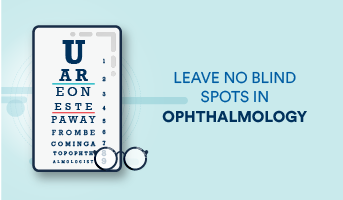

Classification of Epidemiological Studies: Key Concepts and Categories
Epidemiology is a field of medical science that focuses on studying the distribution of disease in human populations and factors that influence this distribution, primarily through statistical methods.
Epidemiology focuses on a group of people and often examines past data. Originating from 19th-century efforts to understand the origins of human diseases, its primary role continues to be identifying human populations at high risk of specific diseases to implement preventive control measures.
Epidemiology uses various methods to analyze population disease characteristics such as mortality rates, incidence rates, and prevalence rates.
In this field, studies are categorized as descriptive studies or analytic studies, depending on the aim of the study to characterize a disease or validate conclusions derived from surveys or lab findings.
Classification of Epidemiology
| Classification | Description |
| Descriptive Epidemiology | Focuses on describing the distribution of disease and health events in populations over time and space. |
| Analytical Epidemiology | Investigates the causes and determinants of disease by analyzing associations between exposure and outcomes using observational studies. |
| Experimental Epidemiology | The basic concepts of this type conduct controlled experiments to study disease causation by manipulating exposure variables under controlled conditions. |
| Clinical Epidemiology | Applies epidemiological principles to clinical practice to improve diagnosis, treatment, and patient outcomes. |
| Social Epidemiology | Examines how social factors (e.g. socioeconomic status) impact health outcomes and disparities in health within populations. |
| Environmental Epidemiology | Studies the impact of environmental factors (pollution, climate) on human health and disease. |
| Molecular Epidemiology | Combines epidemiological methods with molecular biology to study disease causes at a molecular level, including genetic and biomarker research. |
| Infectious Disease Epidemiology | Focuses on the distribution and determinants of infectious diseases within populations, including transmission dynamics and outbreak investigation. |
| Chronic Disease Epidemiology | Investigate the distribution, determinants, and prevention of chronic diseases (e.g. heart disease, diabetes) within populations. |
| Nutritional Epidemiology | Examines the role of nutrition in disease prevention and health promotion, control of health problems, focusing on dietary patterns and nutrient intake. |
Overview of Epidemiological Studies
Epidemiologic studies can be divided into two descriptive methods and analytical methods. Analytical studies are designed to assess the relationship between exposure and diseases or other health outcomes to test hypotheses whereas descriptive epidemiology primarily describes the distribution of exposure and disease within populations and can generate hypotheses, analytical studies are structured to test hypotheses about these associations rigorously.
Epidemiological method studies can be classified as prospective or retrospective. In a prospective study, data collection begins before the exposure and outcomes are determined.
In a retrospective study, data collection starts after the exposure (and often the outcome) has already occurred.
In epidemiological study design, it’s important to understand some important key terms:
- Exposure: It refers to the risk factor or agent (such as experience or procedure) that is hypothesized to have caused the disease under investigation. In statistical terms, exposure corresponds to the independent variable.
- Outcome: This is the disease or endpoint that is being measured or evaluated about the exposure. In statistical terms, the outcome represents the dependent variable.


Fig 1: Types of Epidemiological Studies
Epidemiological studies are classified into several types, these come under experimental and observational designs with commonly used analytical studies given below:
1. Experimental Studies
It involves the design process of conducting research in a systematic and controlled manner to maximize precision and enable clear conclusions about a hypothesis statement. Experimental design is the structure’s method of altering independent variables to observe their effect on dependent variables under controlled conditions, ensuring rigorous control over influencing factors for accurate conclusions in scientific research.
These tests minimize the impacts of the variable to maximize the dependability of the results. In this study design experimental units such as people, plants, or animals are divided into two groups: the Experiment Group, which receives the treatment or intervention, and the Control Group which represents baseline conditions.
The collection of different conditions is termed independent variables, experimental variables, or treatment variables.
Types of Experimental Studies
There are mainly three types of experimental research designs:
| Experimental Studies | Description |
| Randomized Controlled Trial (RCT) | In this trial, subjects are randomly assigned to one of two groups: one (the experimental group) receiving the intervention that is being tested, and the other (the comparison group or control) receiving an alternative (conventional) treatment. |
| Quasi-Experimental Study | The basic concepts in this type of research design attempt to establish a cause-and-effect relationship. The main difference with a true experiment is that the groups are not randomly assigned. |
2. Observational Studies
This type of study comes in a variety of aims and forms to estimate the disease prevalence or health status within a defined area at a specific period and increase our comprehension of disease causes, risk factors, and protective factors.


Fig 2: Three most common observational studies shown in the image.
There are various types of observational studies, two examples include case-control studies, longitudinal cross-sectional studies
| Types of Observational Studies | Description |
| Cross-sectional Study | It is a type of observational research that analyses data of variables collected at one given point in time across a sample population or pre-defined subset. This study type is also known as cross-sectional analysis, transverse study, or prevalence study. |
| Cohort Study | In this study, participants who do not have the outcome at baseline are followed over a period to estimate the incidence of the outcome. In this type of study design, the temporary between the exposure and outcome is well defined. The studies may be prospective retrospective or a mixture of both. |
| Case-control Study | It is designed to help determine if an exposure is associated with an outcome. First, identify the cases (a group known to have the outcome) and the controls (a group known to be free of the outcome). |
| Ecological Study | It compares large groups of people instead of individual differences in things such as cancer rates. The groups can differ by location, for example, city, county, or country. |
| Longitudinal Cross-sectional Study | It employs continuous or repeated measures to follow particular individuals over prolonged periods, often years or decades. |
Understanding the Epidemiological Risk Measures
It is crucial to understand the epidemiological risk measures for evaluating health outcome risks and developing effective public health strategies.
These risk measures provide valuable insights into the relationship between exposures and health outcomes, helping researchers and policymakers informed decisions.
1. Relative Risk (RR)
It measures the ratio of the probability of an event occurring in an unexposed group. It quantifies the strength of the association between an exposure and an outcome.
For example: In RCT, the incidence of heart disease among patients taking a new drug (exposed group) is 10%, while the incidence among those not taking the drug (unexposed group) is 5%. The relative risk of heart disease associated with taking the drug is calculated as:
RR= Incidence in exposed group/ Incidence in unexposed group = 10%/5% = 2
This means that individuals taking drugs have twice the risk of developing heart disease compared to those not taking drugs.
2. Absolute Risk (AR)
It refers to the actual probability of an event occurring in a population. It provides a baseline measure of risk without comparing different groups.
For example: In a cohort study following 1000 individuals over 10 years, 100 developed diabetes. The absolute of developing chronic diseases over 10 years in this population is:
AR= Number of individuals who developed chronic diseases/ Total number of individuals in the study = 100/1000 = 10%
This indicates that the overall risk of developing Chronic diseases in this population over the specified period is 10%.
3. Population Attribute Risk (PAR)
It estimates the proportion of cases of diseases in a population that can be attributed to a specific exposure or risk factor.
For example: In a community, smoking is associated with an increased risk of lung cancer. Suppose 20% of cases of lung cancer in this population are attributed to smoking. The PAR risk of lung cancer due to smoking is:
PAR = Proportion of cases attributed to smoking X Incidence in exposed group/ Total incidence in the population.
If the total incidence of lung cancer in the population is 100 cases per year and smoking contributes to 20% of these cases, then the PAR would be 20 cases per year (20% of 100).
Frequently Asked Questions (FAQs)
Q1. What is the scope of Epidemiological studies?
Ans. These studies encompass a wide range of health conditions, from communicable diseases such as influenza to chronic conditions such as diabetes. With these studies, public health specialists investigate the occurrence of disease within populations to analyze factors influencing health outcomes.
Q2. How does epidemiology contribute to understanding the burden of disease?
Ans. Epidemiological research quantifies the burden of disease by assessing factors such as mortality rates, disability impacts, and economic costs. This data informs public health practices by identifying high-risk groups and helps in the allocation of disease prevention and treatment.
Q3. What role do environmental factors/ external factors play in epidemiological studies?
Ans. Environmental factors such as pollution and climate change, and external factors like socioeconomic status and healthcare access, are critical determinants of health studies in epidemiology.
Q4. What are the key concepts of epidemiology?
Ans. Epidemiology focuses on studying disease occurrence and distribution, analyzing disease processes such as transmission and incubation periods, and assessing environmental exposures. The crucial aims of epidemiology are to identify risk factors, inform health services, and understand the dynamics of disease within populations.
Related post




































































